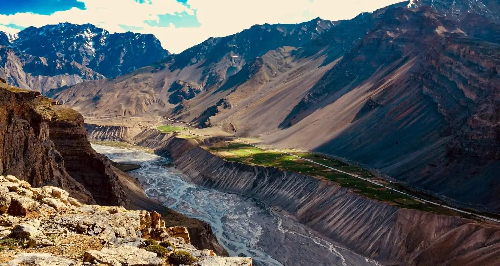The majestic Spiti Valley in Himachal Pradesh has achieved a momentous global recognition, becoming India’s first Cold Desert Biosphere Reserve under UNESCO’s prestigious Man and the Biosphere (MAB) Programme. The official announcement was made during the 37th session of the International Coordinating Council (MAB-ICC), held from September 26 to 28, 2025, in Hangzhou, China.
The designation places the stunning, high-altitude trans-Himalayan landscape on the global conservation map, bringing the total number of Indian sites in UNESCO’s World Network of Biosphere Reserves (WNBR) to 13.
The newly designated Cold Desert Biosphere Reserve spans a vast geographical area of approximately 7,770 square kilometers across the Lahaul-Spiti district. Situated at altitudes ranging from 3,300 to 6,600 meters, this is one of the coldest and driest ecosystems in the world.
- Ecological Significance: The reserve integrates several iconic protected areas, including the Pin Valley National Park, Kibber Wildlife Sanctuary, and the Chandratal Wetland.
- Flagship Fauna: It is a critical habitat for the elusive Snow Leopard, supported by a robust prey base of more than 800 Blue Sheep. Other notable species include the Himalayan Ibex, Tibetan Wolf, and the Golden Eagle.
- Community Core: The recognition celebrates the approximately 12,000 local inhabitants who sustain age-old agro-pastoral practices and Buddhist traditions, living in remarkable harmony with the fragile environment.
This UNESCO listing is expected to significantly boost international collaboration for research and conservation efforts in the vulnerable Himalayan ecosystem, which faces increasing pressures from climate change.
“This recognition firmly places Himachal’s cold deserts on the global conservation map,” said Amitabh Gautam, Principal Chief Conservator of Forests (Wildlife). “It will enhance international research collaboration, promote responsible eco-tourism to support local livelihoods, and strengthen India’s efforts to build climate resilience.”
The state government has affirmed its commitment to protecting the region’s rich natural and cultural heritage while ensuring that development remains in harmony with nature and traditional mountain lifestyles. The Cold Desert Biosphere Reserve stands as a living laboratory for finding a sustainable balance between human activity and nature’s preservation.







